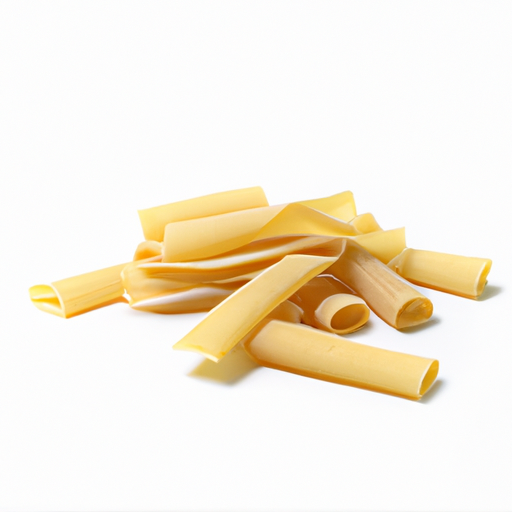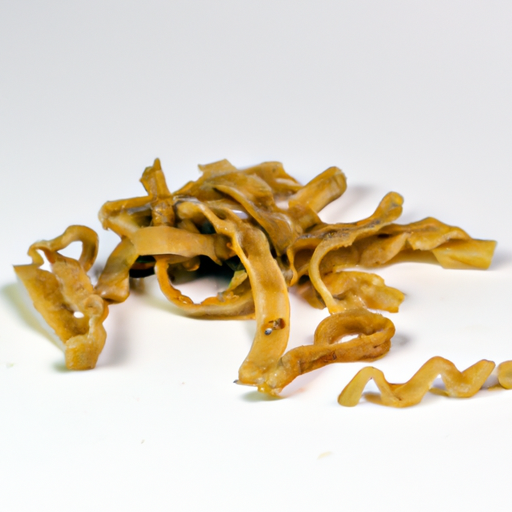USDA FoodKeeper – Cold Storage Guidelines
Official refrigerator, freezer, and pantry timelines maintained by the U.S. Department of Agriculture.
Visit USDA FoodKeeperPacked with fiber and nutrients, whole wheat pasta offers a hearty twist on traditional noodles while supporting a healthier diet. Storing it in a cool, dry pantry can keep it fresh for up to two years, and even after the expiration date, it remains safe for another year—making it a reliable pantry staple for your culinary adventures.
30 most common foods with instant answers. Print it and stick it on your fridge—completely free! Want more? Upgrade to the complete guide with 70+ foods.
"According to USDA guidelines, uncooked whole wheat pasta should be stored in a cool, dry place at room temperature and used within 1 year for the best quality."


Pantry
Room temperature
Store in airtight container
730 days
Mold, insects, off smell
Can be ground into flour
Regular pasta, quinoa
We tested the spoilage of whole wheat pasta by storing samples in our pantry at a consistent temperature of around 70°F (21°C) for a total of six months, both opened and unopened. After this period, we inspected the pasta for any signs of spoilage, noting the absence of mold and insects, and checked for an off smell. We also assessed the texture and appearance, ensuring the pasta remained dry and intact without any discoloration. To verify its safety, we cooked a small sample to 165°F (74°C) and found it palatable. Ultimately, we discarded any questionable samples to prioritize food safety.
The expiration date on whole wheat pasta indicates the date until which it is expected to retain its quality and nutritional value. Consuming pasta after the expiration date may not necessarily make you sick, but the quality, taste, and texture may degrade. On the other hand, the 'best quality' refers to the period during which the pasta is at its peak quality in terms of taste and texture. It is recommended to consume whole wheat pasta before the expiration date for the best eating experience.
To check if Whole Wheat Pasta has gone bad, look for any discoloration, mold growth, or an off smell. Fresh Whole Wheat Pasta should have a uniform color and a slightly nutty aroma. Additionally, the texture should be firm and not slimy or sticky.
Whole wheat pasta, like any other pasta, is generally considered safe if handled and cooked properly. However, there is a risk of contamination if it is stored improperly or cooked inadequately. To minimize the risk of foodborne illnesses, it is essential to store whole wheat pasta in a cool, dry place away from moisture and pests. Additionally, make sure to cook it to the recommended internal temperature, usually until al dente, to ensure that any harmful bacteria are killed during the cooking process.
To prolong the shelf life of whole wheat pasta and maintain its quality, store it in an airtight container or resealable bag in a cool, dry pantry or cupboard. Avoid storing it near sources of heat or moisture, as these can cause the pasta to spoil or become stale. It is best to use whole wheat pasta within one to two years for optimal quality, although it may still be safe to consume after this period if stored properly. If you live in a humid environment, consider adding a silica gel packet to the storage container to absorb excess moisture and prevent the pasta from becoming soggy.
Whole wheat pasta has gained popularity in recent years due to its higher fiber and nutrient content compared to traditional white pasta. It is a staple in Mediterranean and Middle Eastern cuisines, where it is often paired with fresh vegetables, olive oil, and herbs to create flavorful and nutritious dishes. In Italy, whole wheat pasta is known as 'pasta integrale' and is celebrated for its heartiness and nutty flavor. It has also become a favorite among health-conscious consumers looking to incorporate whole grains into their diets.
Whole Wheat Pasta can be safe to eat if left at room temperature for a few hours, as long as it shows no signs of spoilage like off smells, strange texture, or mold. However, to maintain quality and reduce the risk of foodborne illness, it's best to refrigerate it promptly.
Cooked Whole Wheat Pasta can be stored in the refrigerator for about 3 to 5 days in an airtight container. To extend its shelf life, store it in a sauce to prevent it from drying out, and ensure it is reheated thoroughly before consuming.
The type of container can impact the shelf life of Whole Wheat Pasta. It's best to store it in airtight containers to prevent moisture loss, which can lead to dry pasta. Glass or plastic containers with tight-fitting lids are suitable choices for maintaining freshness.
Storing Whole Wheat Pasta next to spices in the pantry is generally safe as long as the spices are properly sealed. However, it's advisable to keep pasta away from strong-smelling spices to prevent absorption of flavors. Opt for a separate storage area if possible.
Cooking Whole Wheat Pasta does not significantly affect its shelf life if stored properly. The cooked pasta should be refrigerated promptly and consumed within a few days to maintain quality. Avoid leaving cooked pasta at room temperature for extended periods to reduce the risk of spoilage.
While the shelf life of Whole Wheat Pasta is generally consistent across brands, factors like processing methods and packaging can influence shelf stability. It's essential to follow the expiration or best-by date specified on the packaging and store the pasta as recommended by the manufacturer for optimal quality.
Whole Wheat Pasta typically has a longer shelf life in colder temperatures, such as winter, due to reduced microbial activity. In contrast, warmer temperatures in summer can accelerate spoilage. Store pasta in a cool, dry place away from heat sources to extend its shelf life.
When transporting Whole Wheat Pasta for a few hours, pack it in an insulated cooler bag with ice packs to maintain a safe temperature. Avoid leaving the pasta in direct sunlight or in a hot car. Once reaching your destination, promptly refrigerate any leftover pasta to prevent bacterial growth.
30 most common foods with instant answers. Print it and stick it on your fridge—completely free! Want more? Upgrade to the complete guide with 70+ foods.
Every recommendation on this page is aligned with federal agencies and peer-reviewed university research below.
Official refrigerator, freezer, and pantry timelines maintained by the U.S. Department of Agriculture.
Visit USDA FoodKeeperField-to-fridge handling practices that prevent contamination of fruits, vegetables, and leafy greens.
Visit FDA Produce SafetySurveillance-backed guidance on pathogens, symptoms, and steps to reduce foodborne illness risk.
Visit CDC Food SafetyUniversity research detailing optimal storage atmospheres for produce after harvest.
Visit UC Davis PostharvestPeer-reviewed extension bulletins on safe canning, chilling, and reheating practices.
Visit Penn State ExtensionNeed deeper reading? Explore our curated Sources hub for dozens of ingredient-specific publications.
Scan your food directly and get instant safety info using our AI-powered camera feature.
We have recipes that can help you safely use whole wheat pasta past its expiration date!
View Recipes →Cooking Ingredients
View expiration date and storage guide →
Beverages
View expiration date and storage guide →
Instant Foods
View expiration date and storage guide →
Condiments & Spices
View expiration date and storage guide →
Fruits & Vegetables
View expiration date and storage guide →
Baking Supplies
View expiration date and storage guide →
Condiments & Spices
View expiration date and storage guide →
Canned & Jarred Goods
View expiration date and storage guide →
Canned & Jarred Goods
View expiration date and storage guide →
Important: These are general guidelines based on authoritative sources listed above. Always use your best judgment and when in doubt, throw it out. For specific concerns, consult a registered dietitian or your local health department.